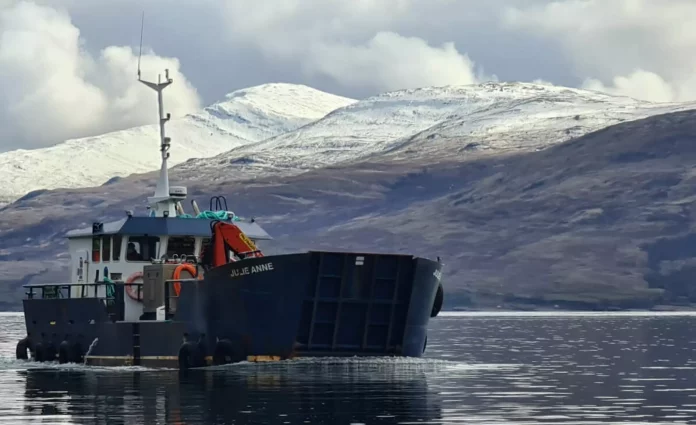Scottish Sea Farms has undertaken a comprehensive inspection of its fleet and implemented new safety measures following the sinking of the Julie Anne in the Sound of Mull earlier this year.
The 15-meter vessel sank at its mooring near Fiunary on July 4, reportedly due to a hole in the hull. According to the company, the incident prompted immediate action by marine teams, specialist partners, and the Maritime and Coastguard Agency to limit environmental impact and safeguard nearby salmon stocks.
A subsequent investigation attributed the sinking to the failure of a pad eye—used to secure fenders—which had weakened over time. The broken component punctured the hull, allowing water to flood the vessel and overcome a closed watertight door. By the time staff were alerted and arrived on-site, the vessel had sunk.
The Julie Anne, originally built in 2015, has been sent to Macduff for a full refit. Scottish Sea Farms said that inspections of its remaining 60 vessels revealed no comparable risks, and it has since introduced a new inspection regime alongside additional monthly safety checks.
Upgraded Safety Measures
As part of its response, the company plans to replace tyre fendering with high-density polyethylene (HDPE) matting on existing boats. This feature, standard on newer vessels, is intended to reduce hull wear and will be installed at a cost of approximately £4,000 per vessel.
Scottish Sea Farms is also reviewing watertight doors across its fleet, a process expected to conclude by the end of the year.
“The combination of events leading to the sinking has been a challenging experience,” said Gerry McCormick, Head of Health and Safety at Scottish Sea Farms, in a company statement. “Lessons have been learned, and we now have measures in place to prevent similar incidents in the future.”


